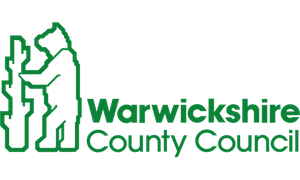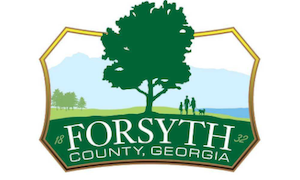The operations that keep municipalities running are complex, involving many departments working with a huge variety of data. As local governments strive to improve the quality of life for citizens and help local businesses flourish, they also have mandates to address, risks and liabilities to mitigate, funding opportunities to explore, and databases to keep up to date. Processes can be tedious and manual—but with the help of a data integration platform, many of these challenges can be tackled using automated workflows.
- Local governments around the world are using FME to replace hours, days, and even weeks of manual effort with a data integration workflow.
Here are 10 ways data integration is improving how local governments operate, along with real examples of cities and counties who have successfully implemented these solutions.
1. Application Integration – connect data across the organization
Every department has its own favorite software, like Asset Management systems, Work Order Management systems, Permitting/Licensing, ERP, GIS, Fleet, Payroll, Taxation, and more. While it’s helpful for each team to leverage specialized applications, this can unfortunately result in data silos. All of these datasets serve the same organization, but you wouldn’t know they’re connected because they’re all housed independently.
Implementing an application integration workflow means allowing all of these systems to automatically talk to each other and send data freely between them, without the need for manual intervention. Here are some cities that have implemented application integration workflows using FME:

The City of Surrey built an FME data integration workflow to coordinate information between disparate applications. Their goal is to let all staff use the best fit-for-purpose applications and employ FME to make sure all of this stays connected. [Read more]

The City of Lévis uses FME “to communicate between several unrelated platforms.” Their pothole repair request system involves many different applications, so an integration workflow is necessary to get it running efficiently. [Read more]

The City of Dublin, Ohio, uses FME to connect data from asset management systems like Cityworks to visualization platforms like Tableau and ArcGIS Online. FME empowers their small team to make data more usable across departments. [Read more]
Learn more:
2. Open Data – build an innovative, dynamic open data portal
Many governments are mandated to deliver open data to citizens. Published data portals can also be helpful for staff and businesses. This means you have to figure out a way to pull data from multiple sources throughout the city on an ongoing basis. Doing this manually is a tiresome process, and here’s where a data integration workflow can help.
No matter what system the data comes from (e.g. Socrata, ArcGIS Hub, CKAN…) and no matter what type of data needs to be shared (CAD, GIS, permitting…), you can connect to it with an FME workflow and share it in a custom-built open data portal. Plus, it’s straightforward to allow people to choose which format and coordinate system they want the data in.

The City of San Jose uses FME to provide an interactive map gallery for staff and citizens. The process involves automatically integrating and converting several data models. [Read more]

San Francisco uses FME to power its “ETL Job Platform”, which automatically transforms and publishes data to an open data portal. This has improved the availability and timeliness of data in the portal. [Read more]
Learn more about building your own open data portal:
- [eBook] Beginner’s Guide to Open Data
- [Webinar] Open Data Portals: 9 Solutions and How They Compare
- [Video] City of Surrey’s Open Data Portal
3. One Call – implement an automated system with minimal effort
Like open data mandates, a lot of regions have a requirement to provide data to citizens in underground information packages. One Call, or “Before You Dig” services, are critical for safety and preventing infrastructure damage. Creating a fully automated system is not only time saving, but it also reduces the risk of manual errors that could lead to liability.
Because FME specializes in data with a spatial component, integrating data across multiple layers of GIS, CAD, and other spatial datasets is straightforward. Here are a couple of organizations who have built automated One Call services:
- [Blog] Read how the City of Burnaby uses FME for their “Dial Before You Dig” program
- [Slides] See how Sunesys uses FME to build their OneCall Automated Response System, which significantly reduces contractor fees, improves data accuracy, and generates an auditing trail.
4. Digital Plan Submissions – handle CAD-GIS conversions with ease
When land developers submit plans to the city, validating and converting the plans to GIS traditionally involves tedious, manual processes. Data integration workflows provide the opportunity to automate this. Many cities are creating self-serve data upload services in which developers can submit their plans and get back a detailed report on its quality.

The City of Henderson uses FME for automated CAD to GIS conversions and validation (a long-time area of specialty for FME!), enabling their automated digital plan submission process for new construction projects. [Read more]
Further reading: [eBook] CAD – GIS Integration
Learn more about FME for local governments
5. Multi-Jurisdiction Data Sharing – connecting regions and improving data quality
For multi-jurisdiction services like emergency dispatch, it’s important to be able to share data between different regions and levels of government. This means many systems need to be kept up to date, accurate, and complete.
Santa Clara County uses FME to aggregate many city datasets and keep them up to date for their 911 dispatch system. The automated process ensures data is synchronized, validated, and updated on a schedule.

Warwickshire County Council uses FME to automate the retrieval of public health data from multiple online sources. Their workflow involves processing and gathering schema information for large data volumes. [Read more]
More examples:
- NG911 and GIS at St. Louis County, MO
- Maximizing Data Accuracy for Reverse 911 in California
- Regional Inter-Agency Data Sharing in Colorado
6. Become a Smart City – embrace IoT, sensor data, and AVL
Smart city projects, which are not only productive for cities but also provide funding opportunities, often involve automating city life using the Internet of Things and sensor data. Sensor data is often geolocated and contains spatial information, which FME is great at working with. Smart city data includes AVL (Automatic Vehicle Location) and GPS solutions like Fire, Fleet and Winter Operations, all of which can be automated using event-driven workflows.

Iowa DOT created several innovative solutions using FME, notably for relaying real-time road conditions and snowplow information. They built FME workflows to read XML feeds, cameras, DMS, 511 events, Waze, and other live sources, plus to generate a public API. [Read more]

Grand Lyon uses FME to provide data to the public in a Smart Data platform, which enables innovative companies in the city to build services to optimize their operations and benefit citizens. [Read more]

The City of Omaha created automated processes in FME for several innovative projects, including scooter and bike tracking, real-time parking information, and more. [Read more]
Learn more:
- [Webinar] Application Integration for Smart Cities
- [Podcast] Automating Data for Smart Cities
7. Business Intelligence – analyze your data and gather intel
Many local governments are increasing their use of business intelligence (BI) systems like Tableau, Qlik, and Power BI. With an FME data integration workflow, it’s possible to bring data from various sources for analysis in BI software.

The City of Lier uses FME to pull data from CAD, GIS, rasters, the web, and other sources, then perform quality control and bring it into Qlik for analysis. [Read more]

Natural Resources Canada (NRCan) runs FME workflows nightly to automatically bring together data from diverse datasets across the country, identify errors, and bring databases into BI software. [Read more]
Further reading for BI workflows:
- [Webinar] Integrating Geospatial Data into the BI Picture
- [Webinar] Tips & Tricks for using FME for BI
- [Blog] 6 Data Integration Tasks for Tableau
- [eBook] Tips for BI Data Prep
8. GIS Data Integration – get more value out of GIS data
The GIS department likely has challenges around field data collection, as-built drawings, spatial analysis, and converting or combining with other data types, like CAD, BIM, 3D models, raster imagery, and point clouds.
FME was originally created to facilitate spatial data translations and transformations, so in terms of the GIS department, FME can address all of these and more. A GIS department with FME in their toolbox can be a revenue-driving business activity.

The City of Auburn, WA, used FME to bring crime data from a raw text format into ArcGIS SDE for online mapping applications. FME helps them “do everything from converting data types quickly, exporting data automatically, to streamlining a lot of our daily GIS processes”. [Read more]

Forsyth County, GA, keeps their published parcel fabric layers up to date with FME. The automated process helps them keep the information consistent. [Read more]

The City of Calgary, Alberta, used FME to automate large dataset translations from LiDAR to DEM. This provides inspectors with critical information for floods. [Read more]
9. Automation – handle service requests and work orders automatically
Automating processes saves time, money, and frees up employees to focus on more important tasks. When local governments can automate service requests and work orders, it also allows for faster response times, leading to increased efficiency and citizen satisfaction.

The City of Naperville automates service requests and work orders across multiple departments, including Electric, Public Works, Finance, and Water. This saved hours of manual data entry and enhanced the efficiency across departments. [Read more]
10. Data Standards Compliance – automatically ensure data meets standards
Many data standards exist to ensure data quality and integrity, and it’s important to meet these standards to ensure responsible data management. However, meeting standards can be a complicated and time-consuming process, which is where data integration workflows are critical. Not only can a workflow perform quality checks, but it can often transform and repair data as well.
The City of Fremont created quality assurance (QA) workflows in FME to ensure data meets standards set out by the Department of Justice and the Racial and Identity Profiling Act (RIPA). This automated process saves time and enables better decision-making with actionable analytics. [Read more]
With the power of automated data integration workflows, the potential to innovate and improve local government operations is endless. Here at Safe Software, we’re happy to answer any questions you have about how FME can help you automate your toughest data challenges. We have a Local Government subscription model that gives you population-based pricing and access to unlimited FME Platform licenses. Contact us to learn more.

Tiana Warner
Tiana is a Senior Marketing Specialist at Safe Software. Her background in computer programming and creative hobbies led her to be one of the main producers of creative content for Safe Software. Tiana spends her free time writing fantasy novels, riding her horse, and exploring nature with her rescue pup, Joey.